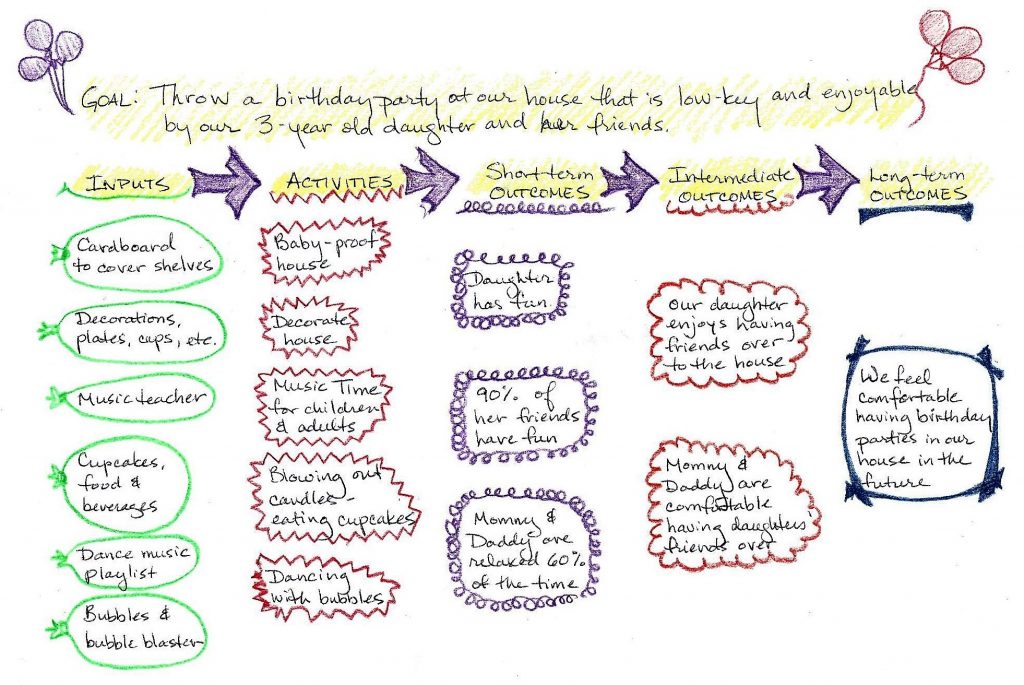Feb
04

Posted by nnlmneo on February 4th, 2016
Posted in: Blog
Cindy and I feel that logic models are wonderful planning tools that can be used in many life events to stay focused on what’s meaningful. This blog post is an example of such a logic model.
My daughter’s birthday is coming up this week and we are having a party for her. My husband and I have quite a few friends with children about the same age as our daughter (who is turning 3). This means that we go to birthday parties and we have birthday parties, and we are looking forward to another 15 years or so of birthday parties. Even though we live in the 4th largest city in the country, it’s a bit of an project to come up with a place for the party. I could see this problem stretching out into future years of Chuck E. Cheese’s and trampoline parks. Not that there’s anything wrong with those places, but we realized that for us it was time to stop the train before we went off the rails. Looking at my own childhood, my birthday parties growing up were all at my own house. So we decided to see if we could have a party at our house and just have fun.
To make sure we had a great event and kept our heads on straight (and had something to blog about this week), I created a logic model for my daughter’s birthday party. We needed an evaluation question, which is “is it possible to have a party of preschoolers at our tiny, not-that-childproofed-house without going crazy?”
So here is the event we have planned.

If you’re new to logic models, they are planning tools that you use from right to left, starting with long-term outcomes (what you hope to see out in the future), intermediate outcomes, and short term outcomes. Then you think of the activities that would lead to those outcomes, and then inputs, the things you need in order to do the activities. (For more information on logic models, take a look at the OERC Blog category “Logic Models“).
What I’ve learned from this process is that every time I would come up with an idea about what we could do at the party, it would need to pass the test of whether or not it leads to the long-term outcome of being willing to throw parties in the house in the future – in other words if the party takes too much work or money (or it isn’t fun), we won’t remember it as an event we are likely to do again. For example, while we are inviting a person to our house to entertain the kids, we’re bringing our daughter’s music teacher from her preschool, so it should be fun for the kids that she knows from pre-school and everyone will know the music and can sing along. Another activity that has high enjoyment and low effort is the dance party with bubbles. All toddlers love to dance, and we can make a playlist of all of our daughter’s favorite dance songs. Adding bubbles to the mix is frosting.
The short term goals are our immediate party goals. We would like the party to be fun for our daughter and for most of her friends (can we really hope for 100%? Probably not, so we put 90%). My husband and I may be a little stressed but we’re setting our goal fairly low at being relaxed 60% of the time (you’ll have to imagine maniacal laughter here). Our intermediate goals are simply that we all can feel comfortable having our daughter’s friends over to our house in the near future. And the long term goal is to think this is a good idea to do again and again.
Wish us luck!